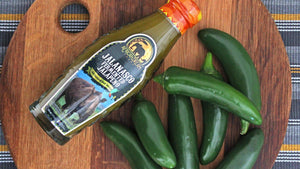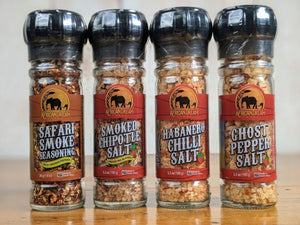Exploring the Jalapeno Pepper: The Versatility of Jalapeño Peppers
Jul 02, 2024
In the vibrant world of culinary delights, jalapeño peppers stand out not just for their moderate heat and distinct flavor but also for their remarkable versatility. Whether you're a seasoned chef or a home cook, the inclusion of jalapeño peppers can transform an ordinary dish into an extraordinary one. This comprehensive guide delves deep into the world of jalapeños, covering everything from their origins and health benefits to growing tips and culinary uses.
The Rich History and Origin of Jalapeño Peppers

Jalapeño peppers are named after the town of Xalapa (also spelled Jalapa), the capital city of Veracruz, Mexico, where they were traditionally cultivated. Their origins are deeply rooted in Mexican culture, dating back hundreds of years. Jalapeños were not only used in local cuisine but also by indigenous peoples for medicinal purposes, utilizing the pepper’s capsaicin for its pain-relieving properties.
As a staple of Mexican cuisine, jalapeños have been a part of traditional Mexican cooking for centuries, playing a key role in dishes that have stood the test of time. The cultivation of jalapeño peppers spread throughout Mexico because of their adaptability to different soils and climates, becoming one of the most recognized chili peppers in and outside of Mexico.
The introduction of jalapeño peppers to other parts of the world began during the Spanish conquest. As Spanish explorers traveled, they brought back various New World goods, including jalapeño peppers, to Europe and beyond. This spread was furthered by Portuguese traders, who took them to Asia and Africa, where they quickly became integrated into local cuisines.
Today, jalapeño peppers are cultivated globally, with major production not only in Mexico but also in the United States, particularly in Texas, New Mexico, and California. These regions offer ideal growing conditions with their long, hot growing seasons, which are perfect for bringing out the distinctive heat and flavor of jalapeños.
This pepper's adaptability and mild to moderate spice level have made it a favorite among chefs and home cooks worldwide, featuring in everything from traditional Mexican salsas and moles to innovative dishes that fuse elements from different culinary traditions.
A Tapestry of Types and Spice Levels
Jalapeños come in various types, primarily differentiated by their stage of ripeness and the specific cultivation practices employed. The classic green jalapeños are most common, but red jalapeños are simply mature versions of the same peppers. When smoked, these red jalapeños are known as chipotles, a staple in Southwestern American cuisine.
The spice level of jalapeños can vary significantly but generally ranges from 2,500 to 8,000 Scoville Heat Units (SHU). This makes them perfect for those who enjoy a bit of heat without it overpowering the dish's flavor.
Exploring the Varieties of Jalapeño Peppers

Jalapeño peppers are not just a singular type of chili; they encompass a range of cultivars and variations, each with its own unique characteristics. The diversity among jalapeño types is mainly influenced by the pepper's maturity, region of cultivation, and genetic variations. Here’s a closer look at some of the popular types of jalapeños you might encounter:
1. Classic Green Jalapeño
The classic green jalapeño is the most widely recognized type. These peppers are harvested before they fully ripen, while they are still green and offer a bright, crisp flavor with a heat that can range from mild to moderately hot. Green jalapeños are a staple in many dishes and are the type most commonly found in grocery stores.
2. Red Jalapeño
Red jalapeños are simply green jalapeños that have been allowed to ripen fully on the plant. As they mature, their color deepens to a rich red, and they often become sweeter and, in some cases, spicier. Red jalapeños are sometimes dried to make chipotles, which are integral to many smoky sauces and dishes.
3. Tam Jalapeño
Developed at Texas A&M University, this variety of jalapeño is designed to be milder, making it an ideal choice for those who prefer less heat. Tam jalapeños are great for use in dishes where the jalapeño flavor is desired without the overpowering spice.
4. Senorita Jalapeño
This is a hybrid variety known for its very mild heat, making it another excellent choice for those sensitive to spicy foods. The Senorita has a subtle heat profile that allows the natural flavor of the pepper to shine through without too much bite.
5. Purple Jalapeño
Purple jalapeños offer a visual twist with their vibrant purple skin, which eventually turns red when fully ripe. They are similar in heat to the standard green jalapeño but bring an unusual color to dishes, making them a favorite for decorative uses in culinary presentations.
6. Mucho Nacho Jalapeño
Larger than the average jalapeño, the Mucho Nacho is known for being both longer and wider. It is usually quite spicy and has thick flesh, making it ideal for stuffing and grilling.
7. Jalaro Jalapeño
The Jalaro is a yellow jalapeño that is a rare sight in many markets. It has a mild heat level and a slightly sweet taste. Like the purple variety, it adds a splash of unexpected color to any dish.
8. Chipotle
Though technically not a distinct type of jalapeño, the chipotle deserves mention as it is a dried and smoked red jalapeño. It has a distinctive flavor that is earthy, smoky, and mildly sweet, widely used in Mexican and Tex-Mex cuisines.
The Role of Jalapeños in African Cuisines
Though not native to Africa, jalapeños have been heartily embraced across the continent since their introduction by European traders. Grown primarily in warm climates like those found in parts of North, East, and Southern Africa, jalapeños have been integrated into both local agricultural practices and culinary traditions. In African cuisine, these peppers are utilized to spice up dishes such as Kenya's nyama choma (grilled meat) and various West African stews and soups, blending seamlessly with indigenous ingredients like cassava and yams. The cultivation of jalapeños has also become economically significant; with the expanding global spice market, African farmers find lucrative opportunities to export their unique chili varieties, bolstering local economies and encouraging agricultural development. Additionally, the health benefits of jalapeños, including pain relief and digestive health improvement, are recognized in traditional medicine across the continent, highlighting their multifaceted contribution to African societies.
Culinary Uses Based on Type
Each type of jalapeño can be selected for different culinary applications based on its heat level, sweetness, and texture. Green jalapeños are excellent in salsas and as toppings, while the sweeter red jalapeños are perfect in sauces or for roasting. Milder varieties like the Tam and Senorita are ideal for dishes where you want the flavor of the pepper without too much heat. Meanwhile, decorative types like the purple and Jalaro jalapeños can be used to add visual interest to salads and garnishes.
Understanding these varieties helps in choosing the right jalapeño for the right dish, whether you are cooking a traditional Mexican meal, experimenting with new flavors, or simply looking to add some color and spice to your plate.
Health Benefits Galore
Jalapeño peppers are more than just a spicy addition to meals; they offer a multitude of health benefits, making them a valuable component of a nutritious diet. These benefits stem from their rich content of vitamins, minerals, and bioactive compounds. Here’s an in-depth look at how jalapeños can contribute to your health:
1. Rich in Vitamins and Minerals
Jalapeños are an excellent source of Vitamin C, an antioxidant that is crucial for the immune system, skin health, and wound healing. They also provide Vitamin A, which is important for vision, growth, and immune function. Additionally, jalapeños contain Vitamin K, which plays a key role in blood clotting and bone health. The minerals found in jalapeños, such as potassium and folate, are vital for heart health and cellular function.
2. Capsaicin: The Health Boosting Compound
The capsaicin in jalapeños, which gives them their characteristic heat, is linked to several health benefits. It acts as an anti-inflammatory agent, helping to reduce swelling and pain in conditions like arthritis and headaches. Capsaicin also has analgesic properties, providing natural pain relief by reducing the intensity of pain signals sent to the brain.
3. Metabolic Benefits
Capsaicin is known to boost metabolism, aiding in weight loss by increasing the amount of heat and energy the body produces. This process, known as thermogenesis, helps burn calories and fat. Studies suggest that capsaicin can also contribute to reducing obesity by decreasing appetite and caloric intake.
4. Antioxidant Effects
Jalapeños contain antioxidants such as vitamin C, vitamin A, and flavonoids that help fight free radicals in the body. This is crucial in preventing oxidative stress which is associated with a variety of chronic diseases including cancer, heart disease, and age-related disorders.
5. Heart Health
The consumption of jalapeños can benefit heart health in several ways. Capsaicin helps to reduce cholesterol levels and blood pressure, both of which are significant risk factors for heart disease. Additionally, the peppers help in improving blood vessel function and reducing inflammation, further supporting cardiovascular health.
6. Antimicrobial Properties
Jalapeño peppers exhibit antimicrobial properties that can help fight infections caused by bacteria and viruses. This is particularly beneficial in the gastrointestinal tract, where capsaicin has been shown to combat certain pathogens without disrupting beneficial bacteria levels.
7. Diabetes Management
Regular consumption of capsaicin is linked to a reduction in blood sugar levels and improvements in insulin sensitivity. For individuals with diabetes or those at risk, incorporating jalapeños into the diet could help manage glucose levels more effectively.
8. Cancer Prevention
Emerging research suggests that capsaicin in jalapeños may have anti-cancer properties by attacking different pathways in the cancer cell lifecycle. It has been studied for its potential to kill cancer cells and reduce tumor growth, particularly in cases of prostate, pancreatic, and skin cancers
Growing Jalapeños at Home
Jalapeños are relatively easy to cultivate, making them a great addition to home gardens. They require a warm climate and plenty of sunlight but can be grown in cooler climates if planted in containers that can be moved indoors when it gets too cold. These plants prefer well-drained, fertile soil and consistent watering, especially during dry periods.
Tips for a Successful Harvest:

Planting: Start seeds indoors 8-10 weeks before the last frost date. Transplant seedlings outdoors once the danger of frost has passed.
Sunlight: Jalapeños need full sun, at least 6-8 hours a day.
Watering: Keep the soil consistently moist but not waterlogged.
Harvesting: Pick jalapeños when they are firm and bright green unless you prefer them red.
Cooking and Preserving
Jalapeños are incredibly versatile in the kitchen. They can be roasted, grilled, sautéed, or used fresh. Cooking jalapeños often mellows their heat, broadening their appeal.

Preserving Techniques:
Pickling: This is a popular method for preserving jalapeños. Pickled jalapeños are excellent on nachos, pizzas, or sandwiches.
Drying: Dried jalapeños, especially when smoked, are known as chipotles, providing a rich, smoky flavor to dishes.
Freezing: Freezing is an excellent way to preserve the spicy flavor and nutritional value of jalapeños.
African Dream Foods Jalanasco - Fermented Jalapeño Sauce utilizes the unique flavor of fermented jalapeños, offering an umami-rich, spicy condiment that enhances everything from burgers to tacos.
Culinary Creations: Recipes Featuring Jalapeños
Jalapeño Cornbread Bites
Ingredients:
1 cup cornmeal
1 cup all-purpose flour
1/4 cup sugar
1 tablespoon baking powder
1/2 teaspoon salt
1 cup milk
2 large eggs
1/4 cup melted butter
2 medium jalapeños, finely chopped
Instructions:
Preheat your oven to 400°F (200°C).
Mix cornmeal, flour, sugar, baking powder, and salt in a large bowl.
Add milk, eggs, and melted butter; stir until well combined.
Fold in chopped jalapeños and pour the batter into a greased muffin tin.
Bake for 20 minutes or until a toothpick comes out clean.

Spicy Jalapeño Guacamole
Ingredients:
3 ripe avocados, peeled and pitted
1 lime, juiced
1 small onion, finely chopped
2 jalapeños, finely chopped
1/4 cup chopped cilantro
Salt and pepper to taste
A few dashes of our Jalanasco - Fermented Jalapeño Sauce
Instructions:
Mash the avocados in a medium bowl.
Add lime juice, onion, jalapeños, and cilantro; mix well.
Season with salt, pepper, and serve with nachos and Jalanasco sauce.

Conclusion
Jalapeño peppers are not just a spice; they're a healthy, flavorful addition to any dish, offering a unique blend of heat and nutrition. Whether you're looking to enhance a recipe or grow them in your garden, jalapeños provide a zest that elevates culinary experiences. The versatile African Dream Foods Jalanasco - Fermented Jalapeño Sauce showcases how globally embraced and creatively used these peppers can be, bridging traditional and contemporary flavors seamlessly.




